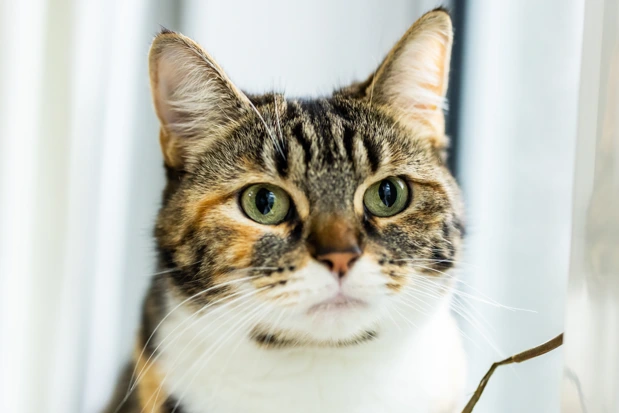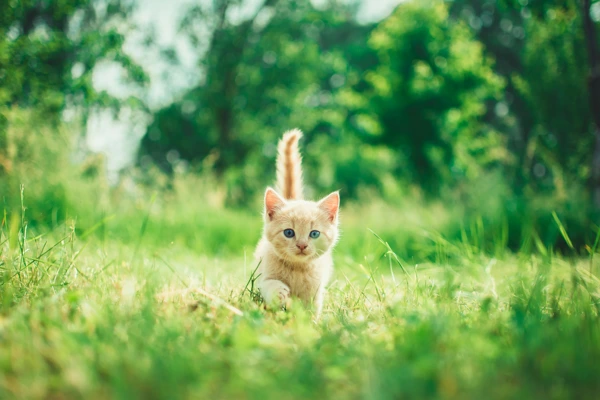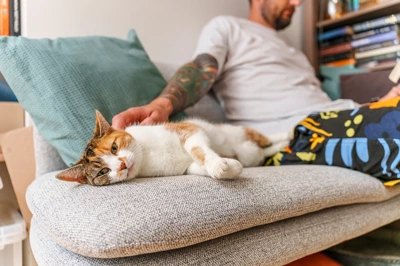A microchip is a tiny computer chip, about the same size as a grain of rice, that is inserted under your cat's skin. Every microchip contains a unique code, which is registered on an authorised database alongside contact details for the cat's owner.
By law, all pet cats in England must be microchipped before they reach the age of 20 weeks, except for unowned cats like feral and community cats. Indoor-only cats must be microchipped as well. As part of the new rules, you must keep your contact details up to date on a Defra-approved microchipping database.
According to the new law, all pet cats should have been microchipped by 10 June 2024. If you missed this deadline and didn't take action to have your cat microchipped within the 21 days following it, you may face a fine of up to £500.
The microchipping law has only been introduced in England at the current time, but we will continue to campaign for this same approach to be introduced in Wales, Scotland and Northern Ireland. We recommend you get your cat microchipped wherever you live.

We regularly reunite owners with their much-loved cats, and in most cases this is only possible thanks to microchips. No matter how far from home a cat is found, or how long they have been missing, having your cat microchipped gives them the best chance of being returned home safely to you.

A small chip is inserted under your cat's skin. This microchip gives your cat their own unique code.
When a cat is found away from home and taken to a vet, their microchip can be scanned electronically and matched to the owner's contact details, which are kept on a cat microchip database.
In the UK, you can expect to pay anywhere between £20 and £30 to have your cat microchipped, depending on where you live. Speak to your local vet for details, or get in touch with your local rescue centre or cat charity. Cat rescue organisations may be able to microchip your cat for a reduced rate.
If you adopt a cat from Cats Protection, your new cat will be microchipped before you take them home. The cost of this microchip is included in your adoption fee.
Changing your contact details on a cat microchip database can sometimes mean paying a fee. Depending on the database, this might be a one-off fee for the lifetime of your cat, or a cost every time you update.
The process of microchipping your cat is quick and is no more painful than an injection. There is no need for ‘recovery’ from the procedure and it won’t cause your cat any discomfort or pain. In fact, they’re unlikely to know it is even there.
Microchips are carefully designed not to be rejected by the body. The information unit inside is housed in medical-quality glass, which is very strong and unreactive. The material used is also able to withstand the stresses and strains it experiences at the site of implantation, so your cat can continue to explore, play, jump and snooze without affecting it.
No, there is no need to shave any fur before inserting a microchip. The implanter needle is small and sterile. It only makes a small nick in the skin which closes up again very quickly.
In human terms, the sensation is like having an injection. There may be some brief discomfort at the time the needle is inserted, however this stops as soon as the process is over. It is very rare for cats to have an adverse reaction to a microchip. Occasionally ,some cats may get a small swelling as a reaction to the needle insertion, but this usually resolves on its own within a few days. If you have any concerns about your cat after a microchip is inserted, it's best to contact your vet.
In England, from 10 June 2024, the law will state your cat should be microchipped before they reach the age of 20 weeks but there is no minimum age to have your cat microchipped.
Many kittens are microchipped at the same time as being neutered (spayed or castrated), when they are already under general anaesthetic.
We recommend your cat is microchipped before they go outside for the first time.

If you’ve adopted a cat from Cats Protection or another animal welfare organisation, there is every chance your cat may already have a microchip. You’ll need to make sure that your contact details are linked to your cat's microchip on a database.
At Cats Protection, we’ll change your cat’s details when you formally adopt them. If you’re getting your cat from elsewhere, you’ll need to ask for further information about the microchip and see if you can access the cat's original paperwork.
If you’ve adopted a cat from Cats Protection, we’ll update your cat’s microchip on your behalf. You’ll be given the paperwork once you have officially adopted your cat, which will include your cat's unique microchip number.
If you have had your cat microchipped by a vet or organisation, they’ll let you know how to register your details online. You’ll usually be sent registration documents following the procedure, within a couple of weeks.
If you don’t receive anything, check with the person or organisation that microchipped your cat. Remember to keep your registration documents and cat’s microchip number safe.

Keeping your details up to date is really important. Unfortunately, many cats can't be reunited with their owners due to contact details being out of date. Updating your cat's microchip details is an easy process.
Get your cat’s microchip number. Keep your cat’s microchip number stored away so you can have it to hand. Not sure what it might be? Call your vet to see if they have it in their records, or take your cat to the vet to have them scanned.
Confirm your cat's microchip database. Lost your original paperwork? You may be able to check which database your cat is registered with by entering their microchip number into the identi look-up tool.
Update your details. Now that you have your cat’s number and contact information of the database, call them or go to their website to change your address or phone number.
We understand losing an adored cat is a very worrying experience. If you've lost your cat and they're already microchipped, it is best to let your microchipping company know. They can make sure your details are up to date to give you and your cat the best chance of being reunited.
If your lost cat is found away from home and taken to a vet or animal welfare organisation, you'll be contacted so you can arrange to pick your cat up. Find out more about what to do if your cat goes missing.
Many vets and animal welfare organisations scan lost cats for microchips, including Cats Protection. If you find a cat you think may be stray or lost, contact your local vet or Cats Protection to ask if they can scan them for a microchip. Find out more about what to do if you’ve found a cat.
Looking to rehome your cat? You’ll need to contact your microchip database to complete the transfer of ownership documents. If you’re giving your cat up to Cats Protection, we’ll ask you for a signed copy of your cat’s microchip registration documents authorising ownership details, or might ask you to fill in a form with more information.
If your cat has been microchipped, you might want to consider installing a microchip cat flap in your home. These identify cats trying to enter your home by scanning their microchip and will only allow entry to those whose microchip number you have programmed into the cat flap.
A microchip cat flat is a great buy for those looking to exclude intruders – especially if they have a habit of eating your cat’s food! You can find a range of microchip cat flaps from SureFlap.
